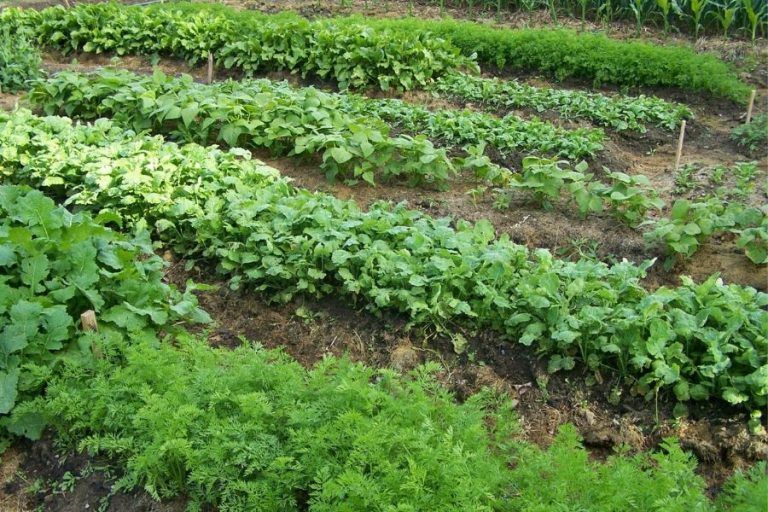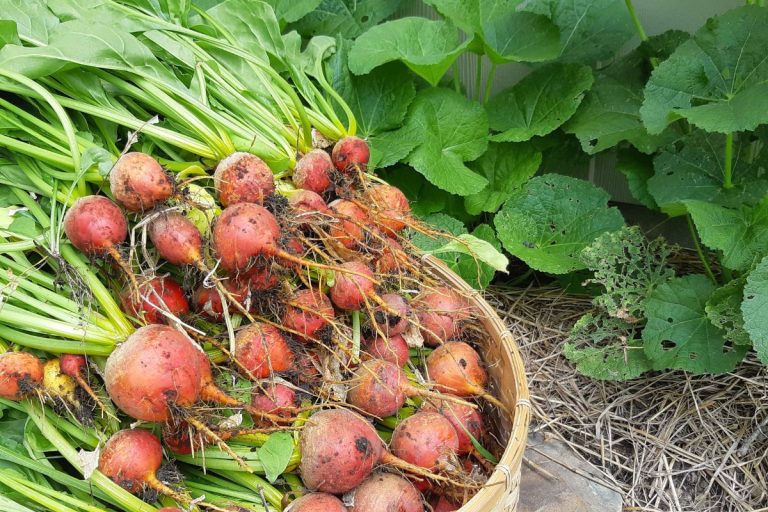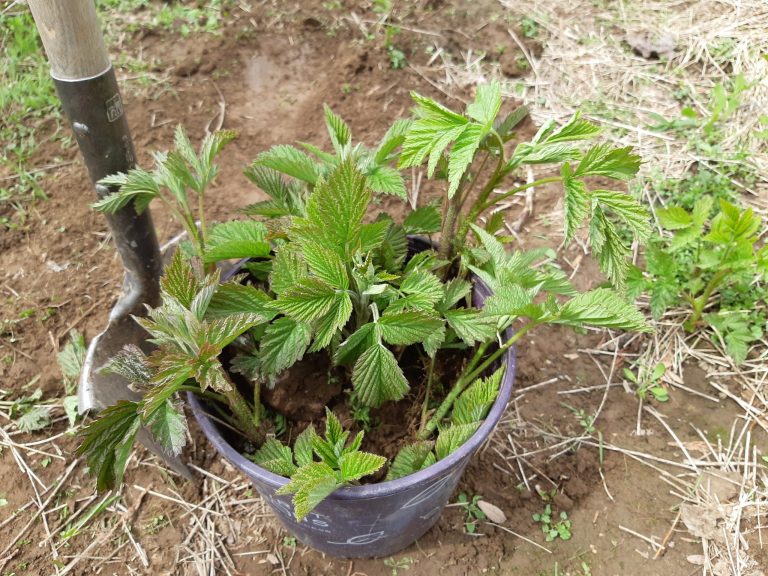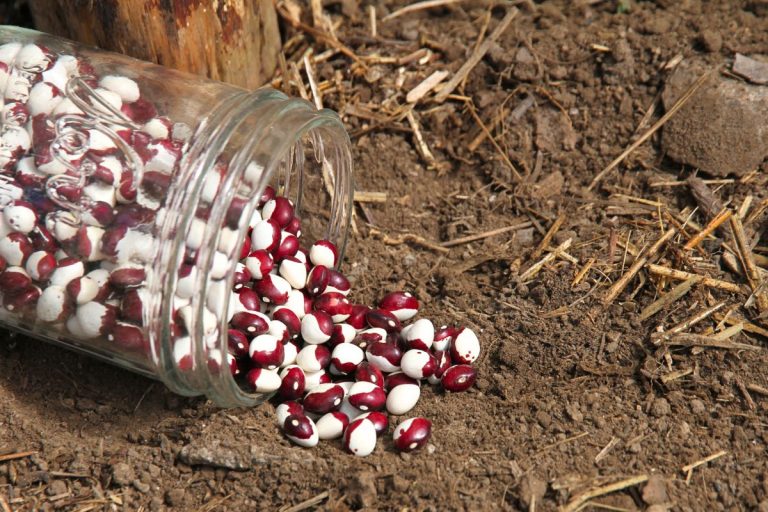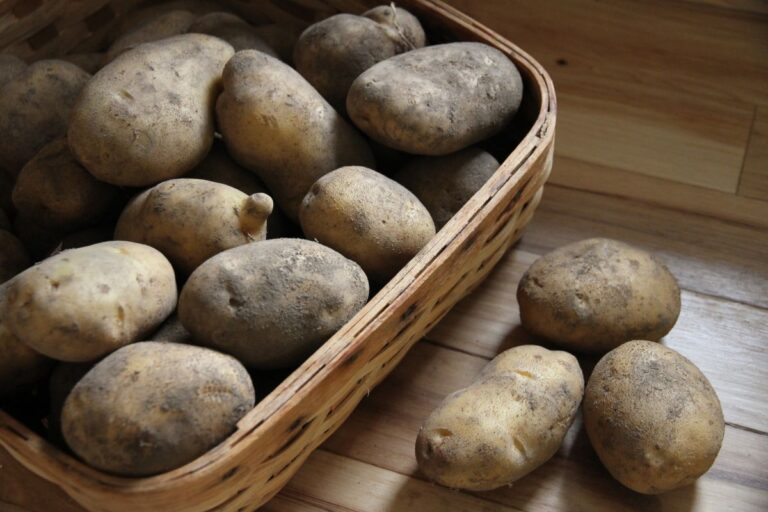How to Harvest Rhubarb without Damaging the Plant
Learn how to harvest rhubarb without causing damage to your rhubarb plants. There's just one simple trick you need to know, and I share it with you here!

Rhubarb appears in early spring, and is one of the first things I get to harvest from my gardens.
Fresh rhubarb is very welcome after a winter of eating produce from the freezers, canning room and our local grocery store.
In my kitchen, I like to use fresh rhubarb in baking. But I also like to freeze rhurbarb, so we can pair it with other fruits in the winter.
And then there's my rhubarb freezer jam or this honey sweetened rhubarb juice you can make for freezing or canning!
Rhubarb is one of those perennial plants that will return for you again and again, provided you treat it right!
It's good to know when and how to harvest rhubarb, so you don't leave open wounds or damage the health of your lovely plant.
Helpful tip: want more rhubarb plants? I teach all about dividing and transplanting rhubarb plants here, so you don't have to buy new starts from your local garden center!
Caring for rhubarb is easy, and harvesting is simple. Let me quickly walk you through it all.
Right Time to Harvest Rhubarb
Rhubarb plants can vary in their cold hardiness, which means some will put out new growth earlier than others.
And certain rhubarb types need to be harvested while stalks are still small, while others can grow to be quite large, without turning tough and stringy.
As a gardener, it's worth taking time to learn about the variety you have, if possible. Then you'll have a better idea of when to harvest!
Here are some general timelines for harvesting, based on the age of your rhubarb plant.
Bare Root Rhubarb Crowns
If you bought bare-root plants from a seed catalog or your local garden centre, they should be put in the ground early spring and left alone until the following year. New plants need time to develop strong roots, and their leaf stalks will help with that.

You can harvest in the second year, only take rhubarb stems for about 4 weeks. The 3rd year, you should be able to take a full harvest.
Rhubarb Divisions from an Established Plant
I'm a big fan of dividing rhubarb for new starts.
If you have a friend with a large plant, you can easily take a division from their root base in the spring. Transplant a shovelful of root, and you can usually take a light harvest from these plants their first year.

A Mature Rhubarb Plant
If you have a well established rhubarb plant, you can harvest in the spring , as soon as stalks are the size of your thumb. That's the rule I like to go by! Living in a northern climate, I often harvest into the end of June or early July.
Step-by-Step Guide to Harvesting Rhubarb
When harvesting rhubarb, the goal is remove the sour stalks without damaging the plant.
You'll want a knife for this project, and a basket too.
I just want to point out, you won't be using the knife to harvest rhubarb stalks. It's for removing the fan shaped leaves after you collect your stems.
Head out to your rhubarb patch and assess the size of your stalks.
Helpful tip: large stalks are great for juicing or making jelly, while the smaller, thumb size stalks will be tender, less stringy and are good for eating or freezing.
To harvest rhubarb, you want grasp the stalk below the leaf, about half way down the stem. Instead of pulling it upwards (like you would a carrot), push the stalk to the side.

Rhubarb stalks are C shaped, and the base will easily snap free from the crown.
This the best way to harvest, because it frees the stalk from the base of the plant, without disturbing the roots. Also, it fully removes the stalk, so you don't have leftover bits rotting down into the crown of the plant.
Harvest larger rhubarb stalks, until there are about a dozen young leaves left on the rootstock. And then, it's time to grab your knife!
Before you bring rhubarb into the kitchen, cut off the fan shape leaves and dispose of them (I also like to cut off the tough, C shaped ends as well).
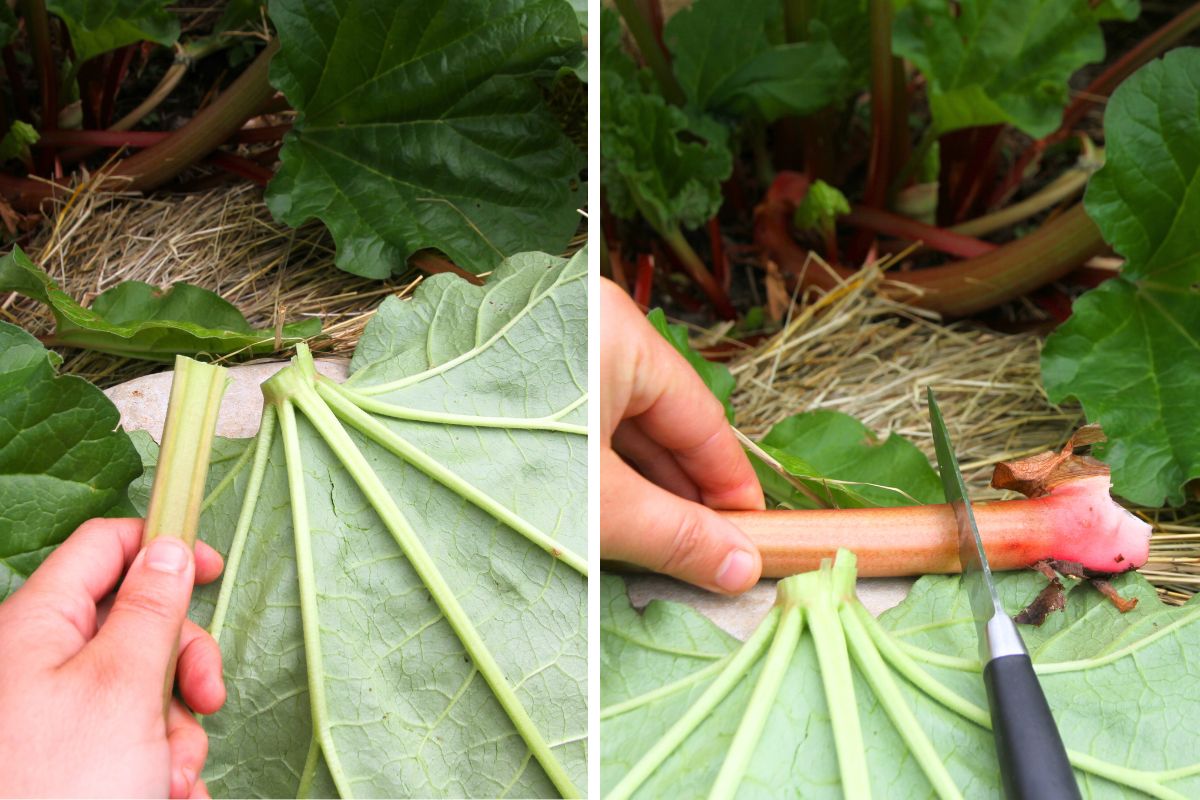
Rhubarb leaves have high amounts of oxalic acid and are poisonous to humans and animals, so dump them in a safe place.
I like to use the leaves of the rhubarb plant as mulch around the crowns. But you can also toss them into the compost pile, where livestock can't get at them
Questions People Ask
Is rhubarb a fruit or vegetable?
Technically, rhubarb is perennial vegetable. But with the sour taste, rhubarb is treated like a fruit and is used for sweet dishes (think rhubarb sauce or pie fillings).
How much rhubarb can I harvest?
You don't want to harvest all the stalks from your rhubarb plant. It needs some green leaves to be healthy. I like to make sure there are 8-10 young stalks left behind every time I harvest.
How Long Can I Harvest Rhubarb from my Vegetable Garden?
It depends on how mature your plant is! Generally speaking, you'll get a 6-8 week window of harvest time from a mature plant. But I outline specifics for you below.
New bare root plants: don't harvest rhubarb in the same year bare roots go into the ground. Wait until the second summer, and you can take a 3-4 week harvest from young plants, and a 6-8 week harvest the third year.
Transplanted rhubarb: transplanted rhubarb usually produces well if you divide the root in early spring. Harvest window is about 4 weeks that first summer.
Established rhubarb: An established rhubarb plant (3 years old) can stay healthy if you harvest for 6-8 weeks in early spring-early summer months.

When should I stop harvesting rhubarb?
You want to stop harvesting rhubarb by early summer (late June, in my climate). As the weather grows hot, the plant will produce fewer stalks. And it's important that the plant has leaves for feeding and nourishing itself.
Why do I need to stop harvesting if my rhubarb is still growing?
Rhubarb doesn't stop producing after 6-8 weeks. But if you want a healthy perennial with strong growth in upcoming years, you need to give it time and energy for growing a strong root system. Pausing the harvest season gives your plant time to grow large leaves will ensure good health in the future.
Rhubarb Recipes for Preserving
Here are some of my favorite rhubarb recipes and tutorials for preserving fresh rhubarb.
